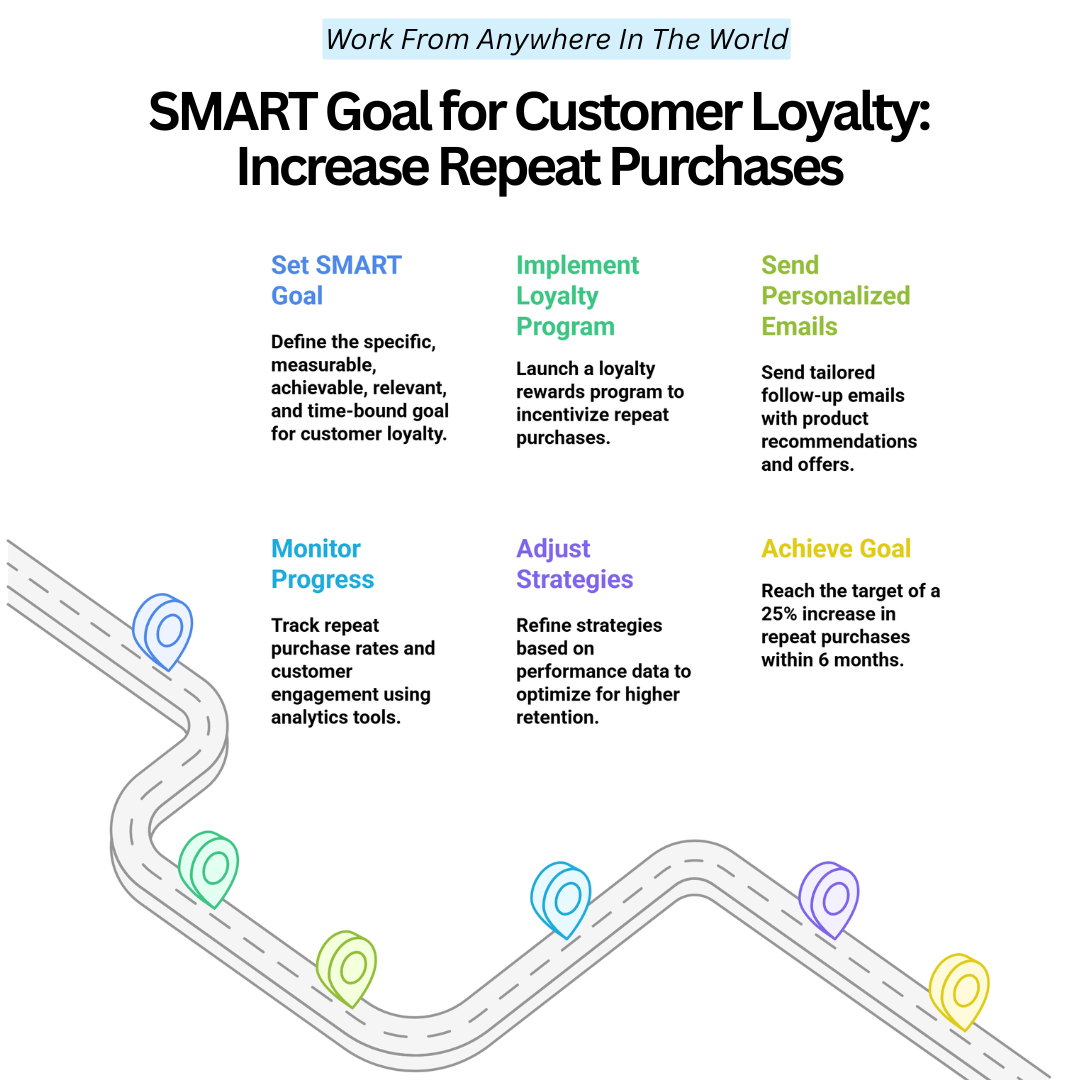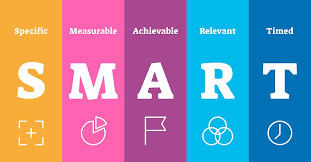Examples Of SMART Goals For Businesses
Examples Of SMART Goals For Businesses
Setting clear and structured objectives is key to business success. Examples of SMART goals for businesses provide a roadmap to achieve measurable and realistic outcomes. These goals ensure teams stay focused, motivated, and aligned with company priorities.
This blog post will explore powerful examples across different areas—marketing, sales, operations, and more—to show how SMART goals can drive growth and efficiency in any business.
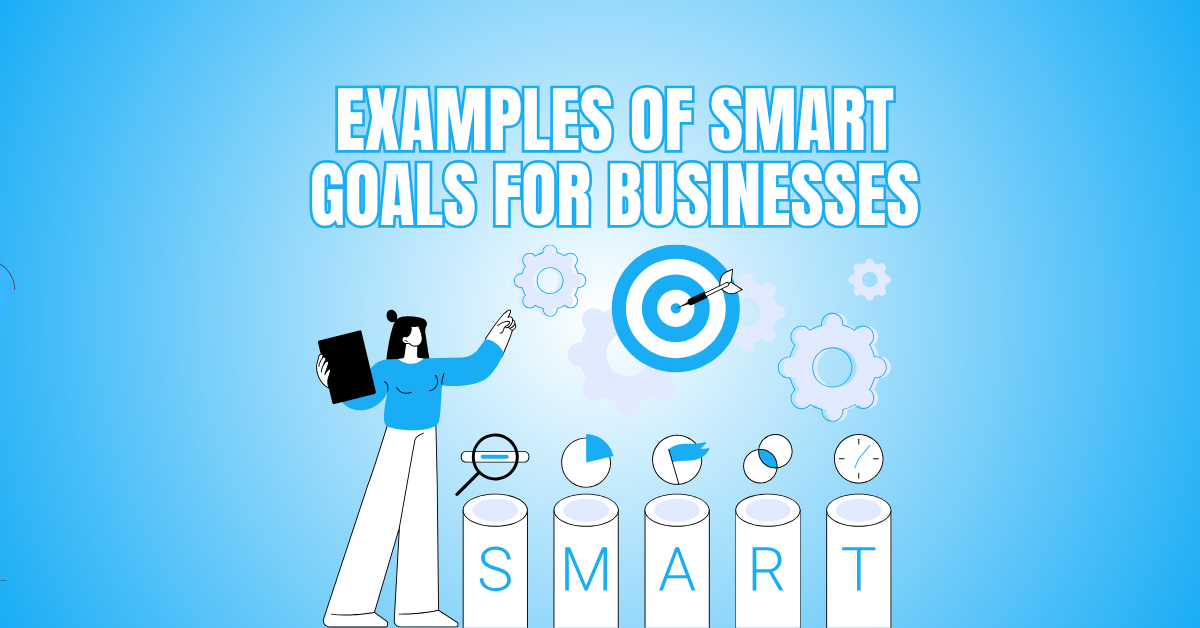
What Are SMART Goals?
SMART goals are a tried-and-true method for establishing specific, doable goals that improve your chances of achievement. The acronym SMART represents:
1. Specific
A goal should be clearly defined and focused. Instead of vague intentions like “get better at marketing,” a specific goal would be “learn Facebook Ads through an online course.”
This clarity gives direction and purpose, making it easier to plan and take action. The more specific the goal, the more likely it is to be achieved.
2. Measurable
A measurable goal includes concrete criteria for tracking progress and success. This might involve numbers, percentages, or milestones—like “gain 1,000 new Instagram followers in 2 months.”
Measuring progress helps maintain motivation and allows you to assess what’s working. Without measurement, it’s difficult to know if you’re moving in the right direction or how far you’ve come.
3. Achievable
A realistic and reachable aim takes into account your existing limitations and resources. While it's good to aim high, the goal should still be within reach.
For instance, doubling your sales in a month may not be feasible, but increasing them by 20% might be. Setting attainable goals builds confidence and encourages consistent progress toward success.
4. Relevant
Goals should align with your long-term values, vision, and priorities. A relevant goal supports broader objectives.
For example, if your business aims to grow its online presence, then a goal like “publish one SEO-optimized blog post weekly” is relevant.
Irrelevant goals, even if achieved, can waste time and energy without contributing to your overall mission or growth.
5. Time-bound
Time-bound goals include a deadline or timeframe, creating urgency and focus. For example, “launch new product by September 15th” sets a clear endpoint.
Without a timeline, goals can get delayed or deprioritized. Deadlines help you plan tasks, monitor progress, and stay accountable. A defined timeframe transforms dreams into actionable steps and ensures steady, intentional forward movement.
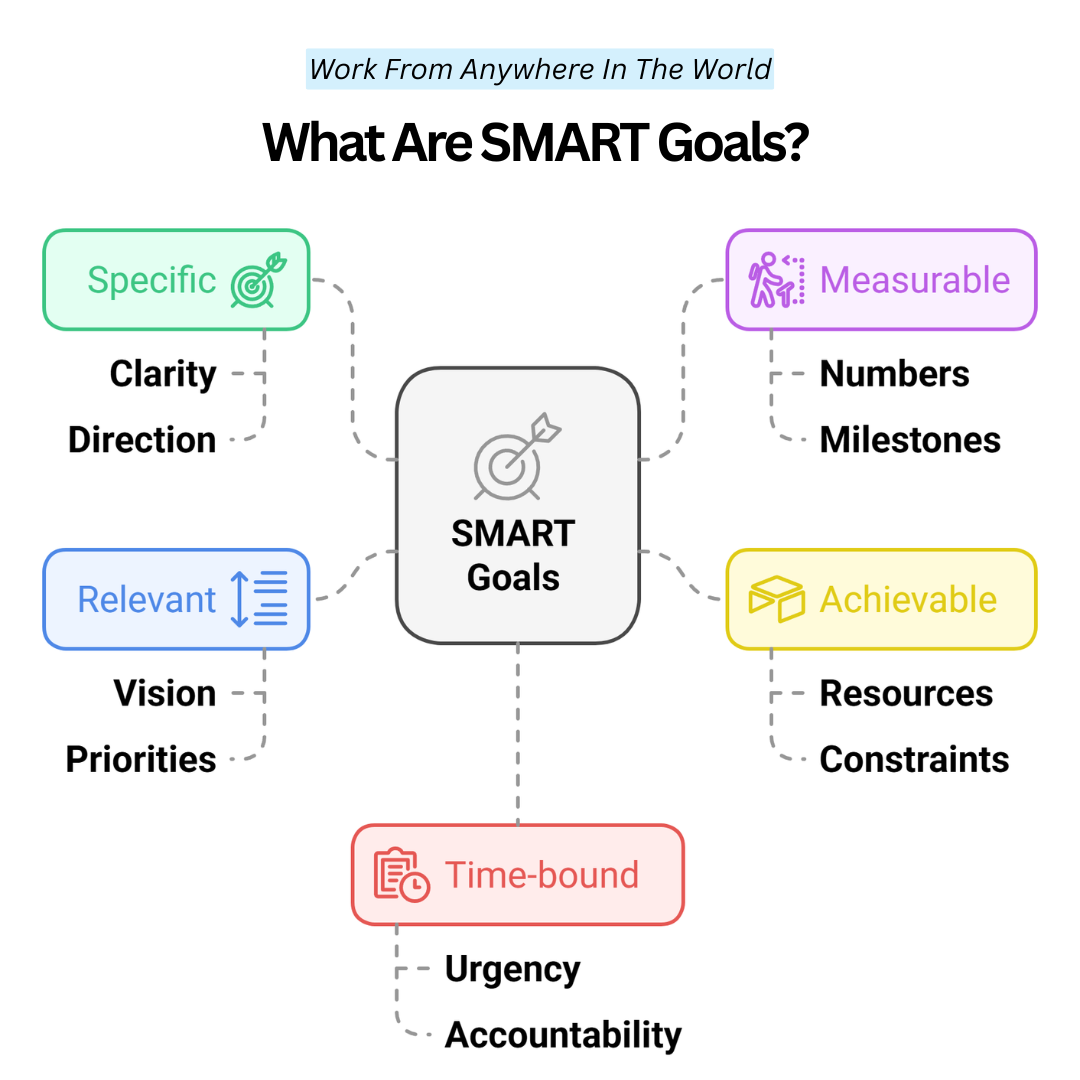
SMART Goal For Marketing: Increase Website Traffic
This objective is one of the practical examples of SMART goals for businesses focused on digital growth and measurable results.
To boost online visibility and lead generation, we aim to increase monthly website traffic by 30% in 6 months using targeted SEO and content marketing strategies.
1. Specific
This goal targets a 30% increase in monthly website traffic by focusing specifically on two proven strategies: search engine optimization (SEO) and content marketing.
Content marketing entails creating and sharing excellent blog posts, videos, infographics, and other content, whereas SEO focuses on improving a website's structure, keywords, and metadata to rank higher in search engine results.
The company may maintain focus and make effective use of resources to increase targeted website traffic by limiting the strategy to these techniques.
2. Measurable
A 30% increase in traffic is a clear and quantifiable metric. For instance, if the current traffic is 10,000 monthly visitors, the goal is to reach 13,000 within six months.
Track your success each month by using analytics tools such as Google Analytics. Track key performance indicators (KPIs) such as page views, bounce rate, session duration, and traffic sources to measure the effectiveness of both SEO updates and published content over time.
3. Achievable
A 30% traffic boost in six months is realistic with a consistent plan. Start by auditing existing website content for SEO improvements—updating keywords, improving meta tags, and enhancing readability.
Then, publish new, relevant content weekly based on keyword research and user intent. Promote material via email newsletters and social media.
Allocate resources for technical SEO, such as improving page speed and mobile responsiveness, to ensure sustainable growth. With dedication and a structured calendar, the goal is within reach.
4. Relevant
This goal aligns perfectly with the broader marketing strategy since increasing website traffic leads directly to more exposure, brand awareness, and potential lead generation.
More visitors can translate into more email signups, inquiries, and ultimately, sales. SEO and content marketing are essential, long-term tactics that support other initiatives like product launches or promotions.
By focusing on organic growth, the business strengthens its digital presence without relying solely on paid ads, making this goal highly relevant and strategic.
5. Time-bound
Setting a six-month deadline creates a sense of urgency and keeps the team accountable. Break this period into monthly benchmarks—for example, aim for 5% traffic growth per month.
This allows for regular performance reviews and adjustments if progress stalls. Use a content calendar to schedule SEO tasks and blog posts weekly.
Set up regular check-ins (bi-weekly or monthly) to evaluate what's working and what needs to change. A defined timeframe ensures focused execution and timely results.
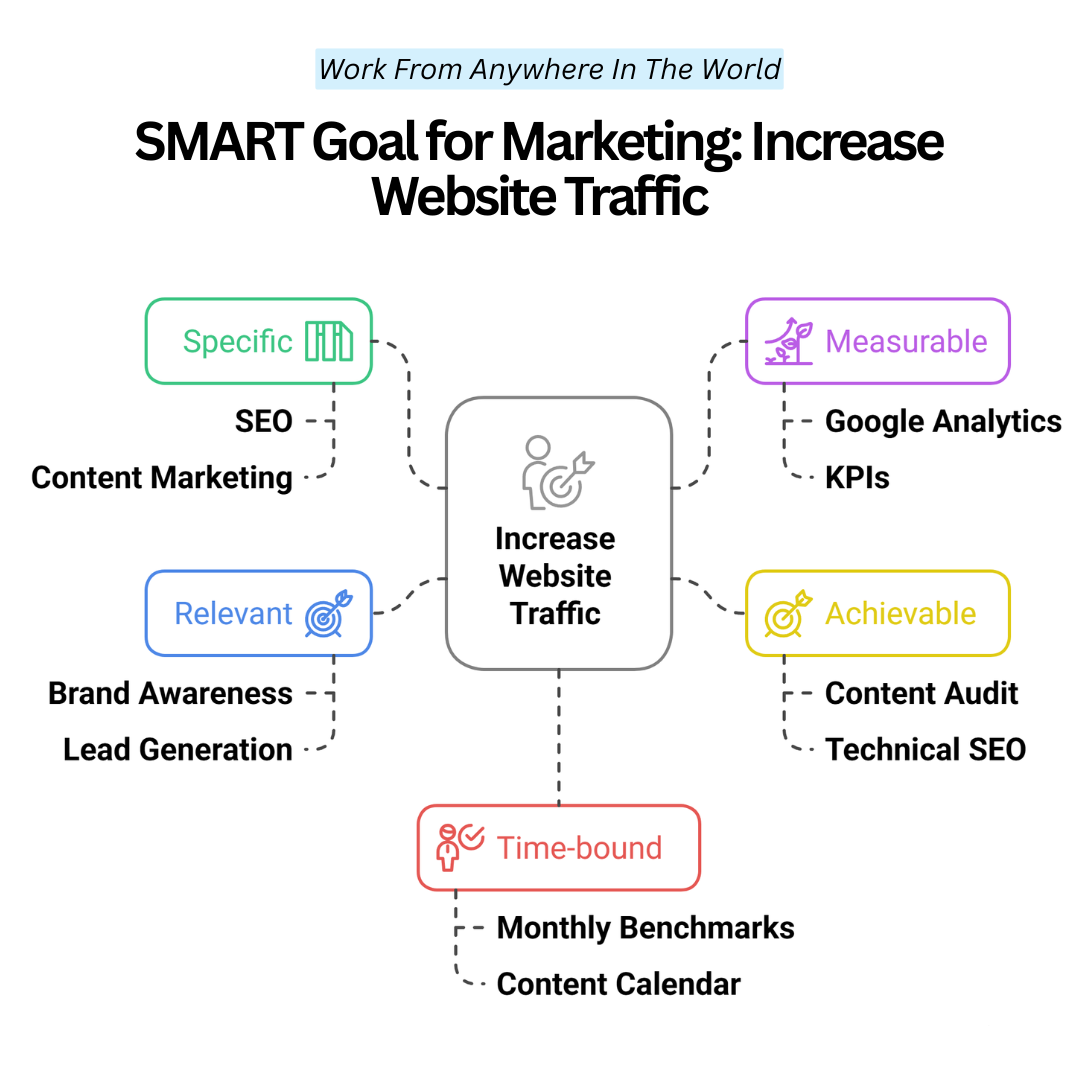
SMART Goal For Sales: Boost Conversion Rate
This target clearly illustrates one of the practical examples of SMART goals for businesses aiming to enhance online sales performance.
To increase revenue and maximize existing traffic, we strive to improve our online store’s conversion rate from 2% to 3% within 4 months through strategic testing and design enhancements.
1. Specific
The goal focuses on improving the conversion rate—the percentage of visitors who complete a desired action, like making a purchase.
This will be achieved by refining the user journey, streamlining the checkout process, and providing clearer calls-to-action. We’ll identify friction points on product pages and optimize them to guide users more effectively.
By targeting the conversion rate specifically, we ensure all improvements are centred around increasing customer actions, not just traffic or engagement.
2. Measurable
A shift from a 2% to a 3% conversion rate represents a 1% absolute increase, which is easy to track using analytics tools like Google Analytics, Shopify reports, or Hotjar.
This small percentage can lead to substantial revenue gains depending on traffic volume. Regular monitoring—weekly or bi-weekly—will reveal progress and allow for necessary adjustments.
Metrics like cart abandonment rate, checkout completion, and customer behaviour heatmaps will also be used to measure and refine the strategy.
3. Achievable
Raising the conversion rate by 1% in four months is practical with actionable tactics like A/B testing, UX enhancements, and improved product pages.
A/B testing different headlines, images, and CTAs will show which versions drive more conversions. Enhancing UX by making navigation intuitive, reducing load times, and simplifying checkout builds user trust.
These techniques don’t require massive investments but deliver measurable improvements when implemented with consistency and insights gathered from customer behaviour data.
4. Relevant
This goal directly aligns with business growth objectives because improving conversions boosts revenue without the need for increasing traffic.
Every additional conversion adds value to existing marketing efforts, maximizing ROI. Whether users arrive from ads, search engines, or social media, converting them at a higher rate means better utilization of those efforts.
Focusing on conversion rate also reflects customer satisfaction—an easy, trustworthy shopping experience increases loyalty and encourages repeat purchases, making this goal both impactful and relevant.
5. Time-bound
Setting a 4-month deadline provides urgency and structure. This timeline allows us to implement and evaluate multiple A/B tests, gather user feedback, and track incremental progress.
A weekly plan will be followed, starting with auditing the current sales funnel, setting up conversion tracking, and then implementing and analyzing tests.
Milestones will be reviewed monthly to ensure we stay on course. This defined timeframe makes the goal more actionable and ensures momentum is maintained throughout the campaign.
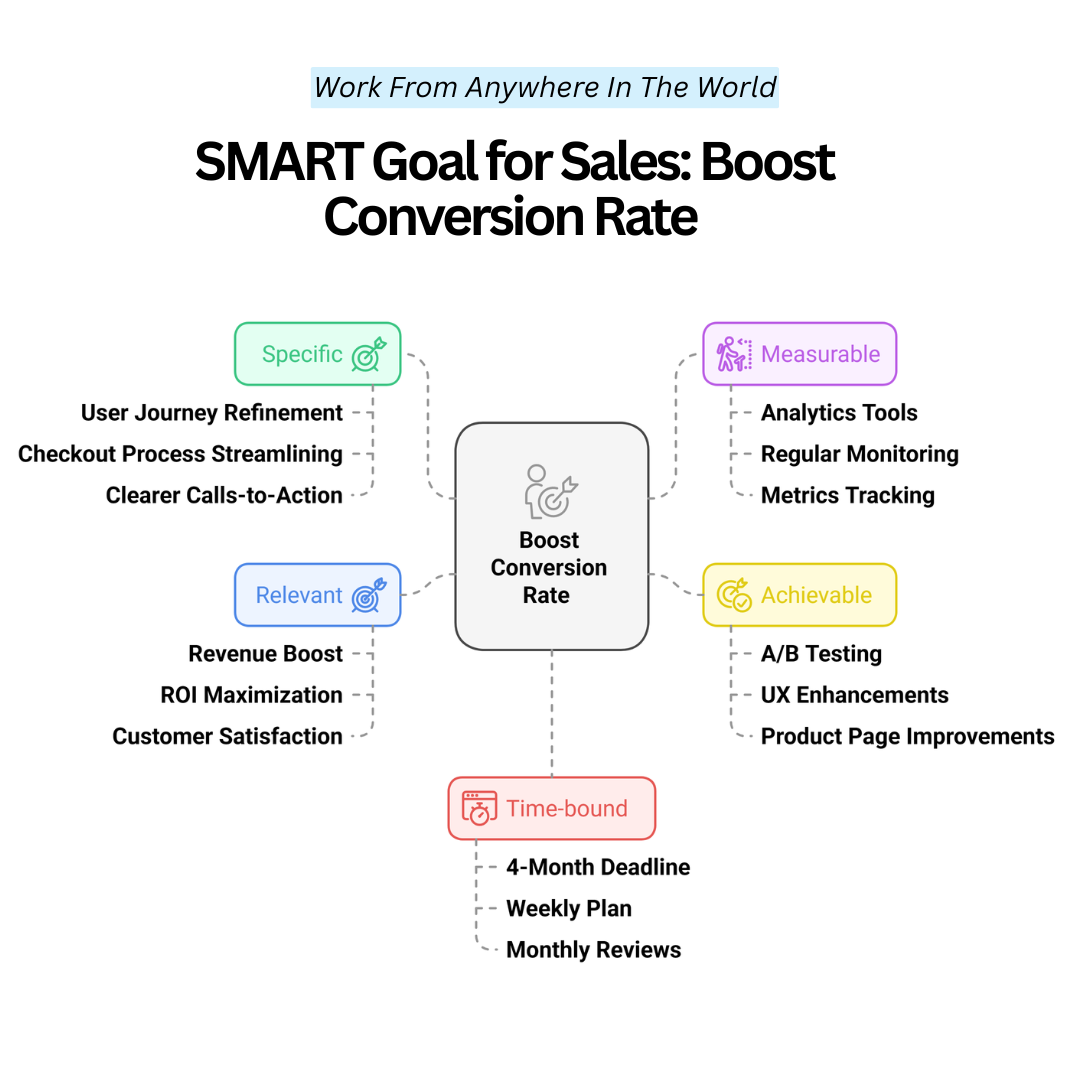
SMART Goal For Social Media: Grow Instagram Followers
This social media growth plan is among the top examples of SMART goals for businesses looking to strengthen their brand presence and community connection.
To boost brand awareness and community engagement, we aim to grow our Instagram following to 10,000 in 5 months using consistent content and strategic influencer partnerships.
1. Specific
This goal is specific in its intent to grow Instagram followers through clearly defined actions: posting four times weekly and collaborating with influencers.
The focus is on using visually engaging, brand-aligned content paired with hashtag strategies and trending audio to maximize organic reach. Influencer partnerships—especially micro-influencers in our niche—will drive targeted traffic to the page.
By outlining these clear activities, we avoid vague strategies and instead take deliberate steps to attract and retain new followers.
2. Measurable
The follower count is a straightforward metric—growing from the current number to 10,000 in five months can be tracked through Instagram Insights.
Break this into monthly milestones, such as adding 2,000 new followers each month. Additional engagement metrics like reach, likes, shares, and saves will also be monitored.
Tools like Meta Business Suite or third-party platforms like Later or Sprout Social can help visualize follower growth trends and measure the direct impact of each content push and influencer collaboration.
3. Achievable
Reaching 10,000 followers in 5 months is realistic when supported by consistent, high-quality posts and influencer amplification.
Posting four times a week keeps the account active and relevant without overwhelming followers. Each post will be optimized with trending hashtags, engaging captions, and calls-to-action.
Influencer collaborations will expose our brand to more appropriate and sizable audiences, increasing the likelihood that they will follow.
This growth goal is entirely achievable with careful preparation, content scheduling, and community involvement (replies, direct messages, etc.).
4. Relevant
Growing the Instagram audience is directly relevant to our overall marketing and branding goals. A larger following means more visibility, increased engagement, and a stronger platform for promoting products, offers, or brand values.
It also supports sales, customer feedback loops, and community-building efforts. In today’s digital marketplace, Instagram functions as both a branding and conversion tool.
This makes the goal aligned with broader efforts to strengthen our online presence and build meaningful relationships with potential customers.
5. Time-bound
The 5-month timeframe offers structure and allows for steady, trackable progress. It’s long enough to develop relationships with influencers, schedule content campaigns, and adjust based on analytics.
Monthly and weekly checkpoints will be established to review what content performs best, identify growth trends, and pivot strategies as needed.
This ensures ongoing improvement and accountability. Using a content calendar and automated posting tools will help keep the plan on schedule and the goal achievable within the set duration.
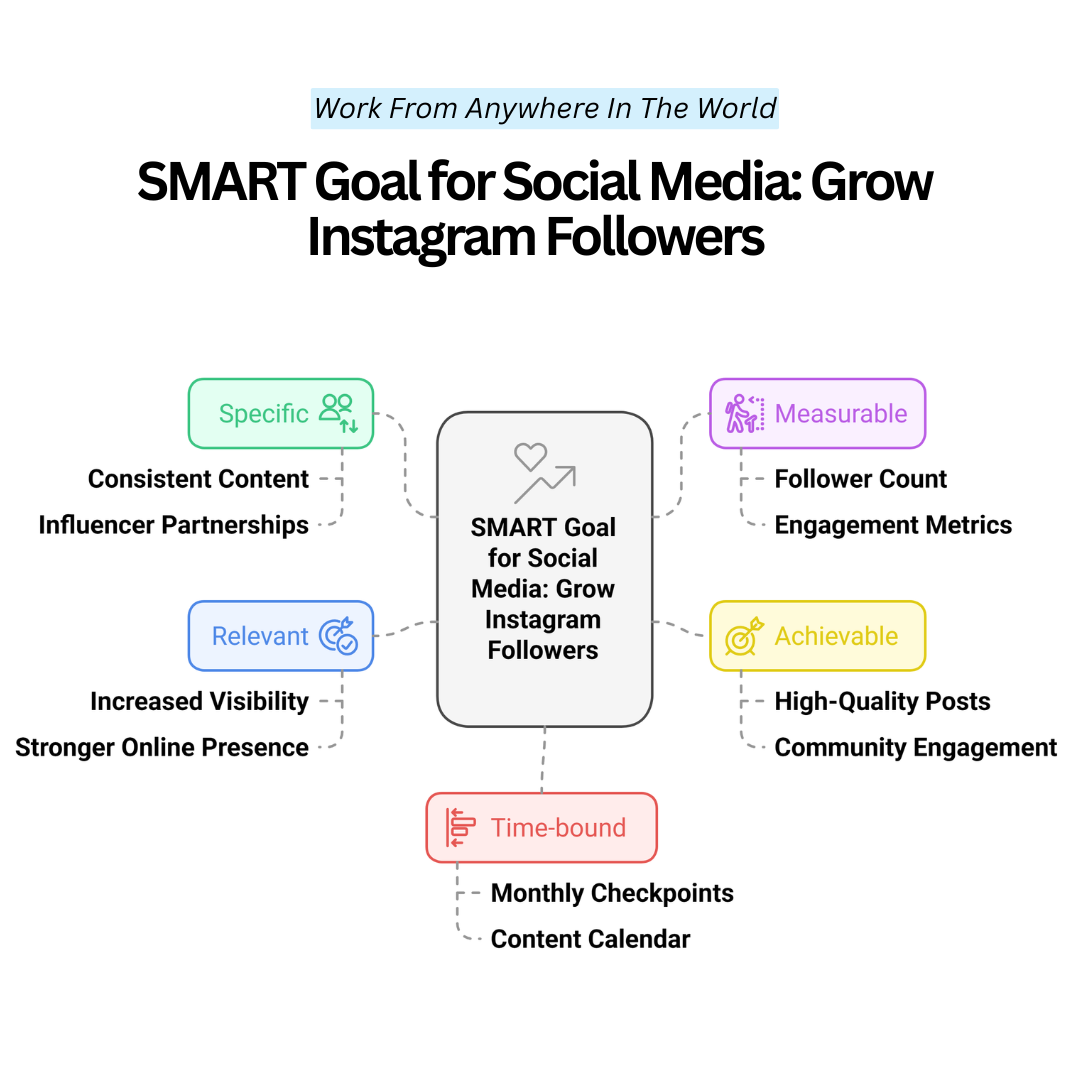
SMART Goal For Innovation: Improve Product Features
This customer-focused strategy stands out as one of the key examples of SMART goals for businesses aiming to improve retention and long-term value.
To enhance user satisfaction and stay competitive, we plan to add 3 new product features based on direct customer feedback before the end of Q3.
1. Specific
This innovation goal centers on implementing three product features requested by customers. Feedback will be gathered from surveys, support tickets, reviews, and social media. The product and development teams will prioritize suggestions based on impact, feasibility, and demand frequency.
The focus is not on random upgrades but on changes that users have asked for directly, ensuring each feature addresses a real pain point and aligns with customer expectations. This clear focus helps keep development efforts targeted and purposeful.
2. Measurable
Success is measured by the actual number of features implemented, specifically three. Each addition will be logged in product release notes and communicated in update emails or changelogs.
Progress will be tracked with project management tools like Jira, Trello, or Asana. Additionally, post-launch user satisfaction can be surveyed to validate that the changes addressed the original requests.
This creates a feedback loop where measurable outcomes drive continued improvement and demonstrate responsiveness to customer needs.
3. Achievable
Implementing three features within a quarter is realistic considering average sprint capacity. After gathering requests, the team will evaluate technical feasibility, assign development timelines, and begin work in two-week sprints.
Each sprint will focus on one feature or a portion of it. Cross-functional collaboration between product managers, developers, and testers ensures smooth execution.
By using agile methodologies, the team can iterate quickly, address bugs, and stay on track without overwhelming the roadmap.
4. Relevant
Adding features that customers want enhances satisfaction, trust, and product usability, making this goal directly relevant to both product quality and brand loyalty.
Listening to feedback and taking action shows users that their voices matter, which can improve retention and advocacy.
In competitive markets, user-driven innovation keeps products aligned with evolving needs. This goal ensures product development stays customer-centric and reinforces the company’s commitment to building solutions that work for its audience.
5. Time-bound
The Q3 deadline (end of September) provides a clear endpoint for development and rollout. Each month within the quarter can be dedicated to one feature cycle—planning, building, testing, and launching.
Timeboxing the process ensures momentum and prevents scope creep. Weekly check-ins with developers and progress reviews help track whether each feature stays on course.
This time-bound approach not only drives delivery but also ensures timely communication with customers awaiting new features.
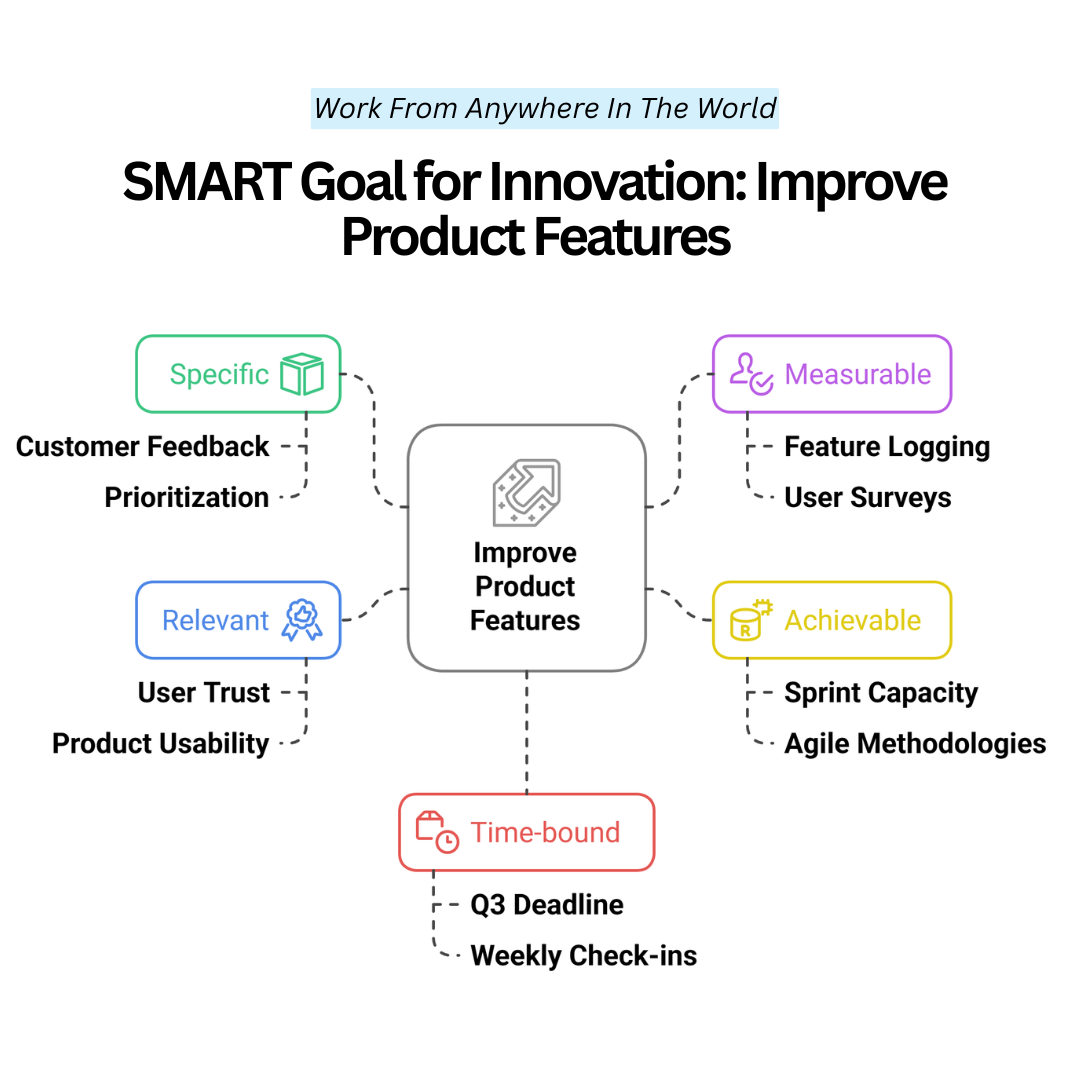
SMART Goal For Customer Loyalty: Increase Repeat Purchases
This customer-focused strategy stands out as one of the key examples of SMART goals for businesses aiming to improve retention and long-term value.
To strengthen retention and lifetime value, we strive to boost repeat purchases by 25% over 6 months using personalized follow-up emails and customer loyalty rewards programs.
1. Specific
This goal targets a specific outcome: increasing repeat customer purchases. The strategy includes launching a loyalty rewards program—offering points, exclusive deals, or gifts for every repeat order—and sending personalized post-purchase follow-up emails.
These emails will include product recommendations, reminders, and limited-time offers to entice another purchase. By focusing clearly on customer retention, we ensure marketing and CRM teams align efforts toward converting one-time buyers into returning, loyal customers who actively engage with the brand.
2. Measurable
A 25% increase in repeat purchases is measurable using eCommerce analytics platforms like Shopify, WooCommerce, or CRM tools like Klaviyo.
Define a baseline from current monthly repeat purchase rates, then monitor progress against the 6-month goal. Weekly or monthly reports will track the percentage of returning customers, average purchase frequency, and customer lifetime value.
This data ensures accountability and enables us to measure campaign success and optimize for higher retention throughout the project timeline.
3. Achievable
This goal is achievable by using automation and proven retention tactics. First, segment customers based on purchase behaviour, then trigger loyalty emails and offers tailored to their interests.
Implement a rewards dashboard to let customers easily track and redeem points. Provide bonus incentives during seasonal or promotional periods.
These methods are resource-efficient, easily implemented with available marketing tools, and do not require drastic operational changes, making the 25% repeat purchase increase an attainable and realistic goal within 6 months.
4. Relevant
Repeat purchases contribute to higher customer lifetime value and reduce reliance on acquiring new customers, which is typically more expensive.
This goal is highly relevant to long-term business growth. Positive reviews, word-of-mouth recommendations, and brand advocacy are all more likely to come from loyal customers.
By increasing repeat business, we build a more stable revenue base, improve brand trust, and create a loyal community that supports the brand even during low-sales periods or competitive shifts.
5. Time-bound
The 6-month timeframe allows us to plan, implement, and refine our strategies. In Month 1, we’ll set up loyalty software and email workflows.
Months 2–3 will involve A/B testing offers, while Months 4–6 will focus on scaling what works and tracking cumulative gains.
Milestone check-ins every month will help us pivot quickly if the repeat rate isn’t rising as expected. The deadline creates urgency and ensures each phase contributes meaningfully to the final result.
Conclusion
SMART goals provide businesses with a clear framework for achieving success through focused, measurable actions. Understanding and applying examples of SMART goals for businesses helps ensure that every objective supports strategic growth and quantifiable success.
Whether improving customer satisfaction or increasing sales, SMART goals make it easier to stay on course and reach targets efficiently.
Applying this approach ensures that every goal contributes meaningfully to overall business growth and long-term success in a structured and strategic way.
I trust you enjoyed this article about the Examples of SMART Goals for Businesses. Please stay tuned for more articles. Take care!
JeannetteZ
Want to Learn How to Build Your Own Home-Based Online Business And Start Making Money Online From Your Comfortable Couch?
Try Wealthy Affiliate!
Your Opinion Is Important To Me
Do you have thoughts, ideas, or questions? I would love to hear from you. Please share your questions, experiences, remarks, and suggestions about the Examples Of SMART Goals For Businesses in the comments below. You can also email me at Jeannette@WorkFromAnywhereInTheWorld.com.
Disclosure
This post may contain affiliate links. I earn from qualifying purchases as an Amazon Associate and through other affiliate programs. Please read my full affiliate disclosure.
You may also enjoy the following articles:
Wealthy Affiliate Coupons For Premium Memberships
Wealthy Affiliate Review – Scam or Legit? The Truth Exposed
An Insider Wealthy Affiliate Review
How To Build A Business With Your Blog

